Having a healthy supply of mitochondria could go a long way to improving both strength & endurance.
Read MoreWhy wear a 2 piece race kit?
Welcome back to All Things Running with Sonja & Jen. Today Jen is going to talk about 2 piece race kits, core body temperature & wearing what makes you comfortable.
My first time racing in briefs was in college. At the time tight mini shorts also known as boy shorts were not an option on the market. Most of us wore soccer shorts as running shorts. And while many more options exist today in the way of running shorts: tight, loose, long, mid and short these were not options when I ran.
After college, before I was running for Reebok, I purchased a black Nike 2 piece swimsuit to race in because without being on a team, there was no way to purchase a bun kit. I preferred the two piece kit after racing in college because the briefs stayed put. They didn’t bunch up between my legs causing unwanted chafing from sweat. I loved that I could now wear a crop top and not feel like I was overheating. I wanted to look like the pro runner I hoped to become.
One day during practice we were discussing racing outfits and my Olympic development coach explained to me how the kits came to be and that women’s times significantly improved if they were able to keep their core body temperature down. I’m sure many of you have had this feeling during a workout. You might remove your shirt, choosing to run bare chested as a male or in your sports bra as a female. Suddenly the rep before that felt hard now feels doable.
The science here is easy. Your heart rate increases as your body temperature rises. It has to pump blood faster to remove excess heat from our bodies, quickly moving the blood to our blood vessels next to the skin so that heat can escape from inside our body. The body has a max heart rate during exercise and if your heart rate goes above that then your brain will slow you down. You can not control this. If you try to push through then your brain might cause you to faint which will really slow you down. If you are still & not moving then you will produce less heat.
The important takeaway here is you should wear what makes you comfortable and just know that for some of us, wearing a 2 piece kit is not to show off but chosen for comfort.
The Simple, Yet Effective Practice of Strides
Welcome back to All Things Running wtih Sonja & Jen. Today Sonja is going to discuss strides. It is important to understand the purpose.
DO YOU DO STRIDES?
If you want to get faster or just have more fun with your running, you should add these into your weekly training!
WHY?
✅IMPROVE CADENCE & DECREASE RISK OF INJURY: Strides can help increase cadence to help you become more efficient and decrease risk of injury.
✅PREP THE LEGS BEFORE A RACE OR WORKOUT: Strides help wake up the legs after an easy run for more advanced speed workouts to come later in the week or before a race. Strides will allow your legs to be ready to dive into a faster paces in the workout or race.
✅HELP IMPROVE RUNNING FORM: By running at top speeds, your body is forced to run with its most efficient form. You will teach your body how to run on your toes/forefoot by improving the brain to muscle (neuromuscular) connections.
✅LEARN PACING: Strides prepare your body to learn how to ‘change gears’: Incorporating strides early on in your running career can teach your body the different ‘gears’ you have.
HOW?
✅Do after an easy run or after a warm up or before a hard workout or race.
✅4-6 reps of 10-30 seconds HARD
✅Take a full recovery between each of either standing or light jogging.
REMEMBER:
✅We are NOT trying to make this a taxing workout! These should not leave you feeling fatigued afterwards.
✅Don’t worry too much about pace. It’s more about effort. Staring down at your watching during strides will defeat the purpose because you aren’t using optimal form then.
Are You Feeling Tired?
Welcome back to All Things Running with Sonja & Jen. Today Jen is going to talk about a common assumption that runners make when they feel tired.
Are you feeling tired?
Back in October I shared a valuable blog article going through the many nutrients that are essential to running performance. Two of those nutrients stand out above all others and the ones that are so easy to remedy. A simple blood draw checking for serum ferritin & vitamin d are easy in ruling out deficiency that are common when runners experience fatigue. Most often deficiency in both are found together.
You can have a great diet where you eat all the right things and you can still be deficient in these two nutrients.
Serum Ferritin
This represents the iron storage in your body. The normal range for non-runners can be as low as 11 but that is not sufficient for runners. The ideal range is above 60 for runners. Iron carries oxygen and is needed for all aerobic running. Less stores means less oxygen being transported. It is rare that an athlete has too much but it is always important to know your numbers.
Vitamin D
This is also known as the happy vitamin. Your body can synthesize it from the sun from cholesterol in your skin but when you protect yourself from the sun, are indoors a lot or you live in an area with low sunlight, then you might not be getting enough. In addition to this vitamin making you happy it is also an essential component in bone regeneration which happens daily.
Running also breaks down bone or damages it but the body restores the damaged bone with new bone making it stronger. If you do not have enough calcium, hormones and vitamin D then you will not be able to repair your bones and you will be more prone to stress reactions & fractures. Unfortunately, this is not just a result of high mileage. Even low mileage runners can suffer.
If you have hormone disruption male or female then this can also impact production. If training volume or intensity is too much or your body increases the stress hormone cortisol, it will decrease natural hormones. As we age we also produce less hormones but this typically starts at age 40 for both men & women.
Here is a full explanation of these nutrients and more from my previous blog post.
https://www.jensaintjean.com/all-things-running/2023/10/30/athletes-and-nutrition
It is such an easy check in with yourself. Try to get these numbers 2-4 times per year to stay on top of it.
Sonja and Jennifer are sharing their personal experiences. This is being provided for informational purposes only. We are not giving medical advice and you should always consult your own doctor for advice related to your own health.
All Things Running With Sonja & Jen
Photo: USATF
The Secret
Welcome back to All Things Running with Sonja & Jen. Today Sonja is going to let you in on “The Secret”.
This is going to be a rather short blog post this week because I have been traveling and competing at the USATF Masters Indoor National Championships in Chicago since Thursday.
It was all around a great meet and I’m happy (never satisfied, LOL) with my performances.
My first event was on Friday (which happened to be my birthday!). The 400 meters is the shortest distance I race but it’s also the race I find the most fun! I ran the fastest time I’ve run for the distance in about 5 years. My time of 63.73 seconds earned me a silver medal in my 50-54 age group (I am now 53).
On Saturday I raced the Mile and found myself alone out front. With no one to chase or pace with it was quite challenging to run as fast as I had earlier this year in collegiate meets. My time of 5:27 for the win was ok, but not great… and about 13 seconds slower than my best Mile this season. Still a win is a win, and I am grateful! The 800m on Sunday was similar to my Mile as I had to push myself from the front, but I enjoyed it more and just ran as even splits as I could for the win in 2:27.
Throughout the long weekend I was able to visit with many of my Masters friends and meet many more! One highlight was meeting two gentleman (father and son) who were 95 and 72, and the 95 year old father was competing in 4 events at the championship! Ironically, the (much younger) son was injured and could not compete. Another great memory was watching several of my Masters friends race the 4 x 200m relays where more than one WORLD Record was broken! Finally, Masters 60-64 age group phenom, Sue McDonald and I were staying at the same hotel and shared an Uber back and forth to the track facility each day. We also shared my birthday dinner together and had numerous discussions throughout the weekend on the sport, our families, and just life in general. I’m so thankful I had this extra time with Sue who is a true inspiration (she set no less than 10 world records last year!).
I shall treasure these memories from this weekend, not so much because of my performances, although I am extremely grateful for them (especially that 400m!), but because I am so privileged that I am able to participate in a sport that welcomes all ages, abilities, genders, etc.. Not only am I able to participate, but this venue has provided me with friendships I will grow old with, travel opportunities all over the world, and a purpose to continue to train and test my personal limits day after day, year after year.
So, what is this “secret” you ask? It is this:
The secret is it’s not the running (or racing, or winning, or performance times), that matter. It’s the people you share all of that with and the memories you take with you.
That’s all I have to contribute this week, but I hope you have (or find) something in your life that makes you feel this way too! If you are 25 and older and would like to learn more about our USATF Masters community, please DM Jen or I and we will share all we know with you! Have a great week everyone!
Photo by Aleksander Saks on Unsplash
What is creatine?
What is creatine?
Welcome back to All Things Running with Sonja & Jen. Today Jen is going to talk about Creatine which seems to be having a moment again. It is important to understand what it is and how it is used.
Creatine is created by the body in response to exercise. Creatine is a naturally-occurring substance that's found in meat and fish, and also made by the human body in the liver, kidneys, and pancreas. It is converted into creatine phosphate or phosphocreatine and stored in the muscles, where it is used for energy.
There are 3 Energy Systems:
Anaerobic Alactic (ATP-CP) Energy System (High Intensity – Short Duration/Bursts)
Anaerobic Lactic (Glycolytic) Energy System (High to Medium Intensity – Uptempo)
Aerobic Energy System (Low Intensity – Long Duration – Endurance)
One of the ways that this ATP supply is regenerated is through the molecule creatine phosphate (or phosphocreatine). In the process of regeneration of ATP, creatine phosphate transfers a high-energy phosphate to ADP. The products of this reaction are ATP and creatine.
Creatine-P helps maintain a constant concentration of ATP in muscle during sudden bursts of exercise that would otherwise deplete ATP concentration in the cell.
ATP - adenosine triphosphate is the primary molecule of energy for human movement, or exercise. When our body is at rest, we have a small store of ATP, enough for a few seconds of intense exercise performance (e.g. 5 second max sprint effort, or a vertical jump). This ATP is replenished via another key molecule - phosphocreatine (PC) which can also be referred to as creatine phosphate.
Energy from this system is supplied very quickly, but lasts less than 10 seconds. The body must rest in order for ATP stores to be replenished. This energy system does not rely on nutrition - meaning we do not get the molecules by breaking down food, but synthesize them ourselves. However, creatine supplementation may enhance the PCr system. Additional energy systems are available for more sustainable energy production as exercise duration increases, all of which ultimately produce ATP.
What studies show.
If the body synthesizes the CP system then the question of whether or not to supplement is not clear and will depend on the events in which you participate.
Most studies, however, have noted only a small increase in creatinine levels even with doses ≈20 g/day. Although taking creatine may increase creatinine levels, long- and short-term studies have found that creatine doses ≤10g/day don't impair kidney health in people with healthy kidneys.
When you stop taking creatine, your body will resume its normal production of creatine. You may experience a decrease in strength, endurance, and performance, but this difference likely won't be drastic. A proper diet, structured training routine, and recovery can support your training goals even without creatine.
Who is taking it?
Creatine might benefit athletes who need short bursts of speed or increased muscle strength, such as sprinters, weight lifters and team sport athletes.
While taking creatine might not help all athletes, evidence suggests that it generally won't hurt if taken as directed. Although an older case study suggested that creatine might worsen kidney dysfunction in people with kidney disorders, creatine doesn't appear to affect kidney function in healthy people.
When used orally at appropriate doses, creatine is likely safe to take for up to five years. As with any dietary supplement, it's important to choose a product that follows recommended manufacturing practices and subscribes to third-party testing to ensure the product's quality.
Side effects
Creatine can cause weight gain, generally as lean body mass. People who have low levels of creatine — such as vegetarians — appear to benefit most from creatine supplements.
Although some there are claims about creatine’s side effects and safety issues, none of them are currently supported by current research. Earlier studies from the 90’s had concern about the supplement and its impact on the liver & kidney’s.
Regular diet vs Supplement
A regular diet and natural creatine levels do not typically maximize muscle stores of this compound. The average stores are about 120 mmol/kg in someone who weighs 154 pounds (70 kg), but creatine supplements can elevate these stores to around 160 mmol/kg. During high intensity exercise, the stored creatine helps your muscles produce more energy. This is the main reason that creatine enhances exercise performance. Once you fill your muscle’s creatine stores, any extra is broken down into creatinine, which is metabolized by your liver and released in your urine.
Do I take it?
I don’t personally take a supplement as my body’s natural CK levels are optimized. My body also has naturally high liver enzymes that border on being too high. This can all be attributed to the training that I do as a middle distance runner. It is important to know what your levels are before you begin any supplementation. I use Inside Tracker to monitor all my performance blood markers. I get tested at least 1-2 times per year. These numbers are always elevated when I get my blood drawn after high intensity workouts which happens to be the case year round. So I consider my results with that in mind and always consult my doctors if I have questions.
Sonja and Jennifer are sharing their personal experiences. This is being provided for informational purposes only. We are not giving medical advice and you should always consult your own doctor for advice related to your own health.
Safety On The Run
Welcome back to All Things Running with Sonja & Jen. Today Sonja is going to discuss some personal safety strategies for women.
Running for fitness or training is a beautiful expression of physical freedom. Unfortunately, there have been several recent incidents in the news of females being assaulted and/or abducted while out running. We should not have to restrict our movement or stay inside on a treadmill to feel safe. However, with the reality of present day circumstances, it is necessary to protect ourselves. I reviewed several resources for tips on safety considerations while running alone and I also consulted with my husband who has been in law enforcement for the past 25+ years. Here are the safety strategies I think are the most helpful and least restrictive to our personal autonomy:
1. **Be Aware of Your Surroundings**: Stay alert and be mindful of your surroundings while running. Notice any suspicious individuals or activities. If you are listening to music use only one earbud or use it at a low enough volume so that you can hear what’s going on around you.
2. **Carry Identification**: Always carry some form of identification with you, such as an ID card or a driver's license, in case you need to identify yourself to law enforcement.
3. **Inform Someone About Your Running Route**: Let a friend or family member know your intended running route and estimated return time. This way, someone will be aware of your whereabouts in case of an emergency. My family uses the Life 360 App to access each other’s location if/when needed.
4. **Stay Visible**: Wear bright and reflective clothing, especially if running in low-light conditions.
5. **Follow Traffic Rules**: Obey traffic laws and use designated pedestrian crossings when crossing roads. This will help you stay safe from moving vehicles, and also keep you in view of any public safety cameras in the area.
6. **Trust Your Instincts**: If you feel uncomfortable or sense danger while running, trust your instincts and take necessary precautions. It's okay to change your route or seek help from law enforcement if needed.
7. **Use Safety Apps**: Consider using safety apps on your phone that allow you to quickly contact law enforcement or send an alert to designated contacts in case of an emergency.
8. **Take a personal safety self defense course** or join a local Jiu Jitsu dojo. My youngest daughter belongs to a Brazilian Jiu Jitsu dojo and just going once a week has taught her extremely helpful self defense tactics as well as improved her overall confidence as a young female.
9. **Carry pepper spray**. There are a wide variety of small pepper spray canisters you can purchase online that are easy to carry. Make sure you understand how to use it properly. This is obviously for a worse case scenario but it could give you the precious extra minute you may need to get away from an attacker if it should ever come to that.
Remember, these are general tips, and it's essential to be proactive about your safety while running. If you have specific concerns or need more personalized advice, consider reaching out to local law enforcement agencies or running groups for additional guidance.
Sonja and Jennifer are sharing their personal experiences. This is being provided for informational purposes only. We are not giving medical advice and you should always consult your own doctor for advice related to your own health.
Photo by eswaran arulkumar on Unsplash
How Do You Push Through To The Next Level?
Welcome back to All Things Running with Sonja & Jen. Today Jen is going to discuss how to push through to the next level. Honestly this is the hardest part of racing and it is more likely than not that it is your mind holding you back not your training.
As competitors we are all highly trained. There are also many different training philosophies. I don’t think one is better than another. I also don’t believe that doing the same thing all the time is good as the body gets stagnant. That is something we can talk about in another post.
Today I want to talk about how you can make that breakthrough you’ve been working toward and what is really holding you back. I’ll also share some tips on some of the things that have helped me.
Often as an athlete we want to blame someone or something other than ourselves, for example:
The race got out slow.
I was boxed in.
I was clipped.
I was running in lane 2.
I went out too fast.
But really when these things happen during a race our mind can either dwell on the unfortunate or see it as a rally call to do something different. Racing frequently gives us a number of opportunities to experience different scenarios that we can use in future races.
When I hear the above statements it tells me that mentally you need to get tougher. And this at times can be very hard to do. If you are struggling, I recommend working with a sports psychologist, a therapist or if you have a great relationship with your coach to help figure out what you are afraid of or what is holding you back. Racing is supposed to be something you enjoy and after each experience you should be able to walk away with 1 thing you can do better and 1 thing that you can be proud of doing.
In order to get to this next level you have to be willing to take risks to see the performance you are capable of racing. That doesn’t mean that we should all think we can race at a world championship level today but improving on where we are currently.
This might just be for you:
If you are a high school runner and trying to run a time to be recruited.
If you are a collegiate runner and you are trying to qualify for championships.
If you are a post collegiate runner and you are trying to run a PR or qualify for USA’s or the Olympic Trials.
If you are a masters runner and trying to run a higher age graded performance than what you’ve been running.
Here are some tips:
Stop focusing on the outcome and your splits. Not all good races are run this way.
Be willing to take a risk.
Be willing to be uncomfortable.
Be willing to accept defeat or running worse than you ran before.
Stop thinking during your race. Have a few ideas of how the race can play out and be able to respond to each.
Part of your training requires daily mental preparation.
Believe in your coach & your training. There is no perfect training plan. There are many. If you don’t believe in your training, have a conversation.
You have to rest. Are you wasting it on something that doesn’t matter as much as your goal?
Be a student of your sport.
Build a community around you. A rising tide lifts all boats.
I hope that some of this helps you to think differently about why you might not be reaching your goals. I know that I have had to do a ton of work recently when before I thought I was locked in. Sometimes things in our life put a different spin on things. It takes work but I’m certain you can get through your rough patch when you remember your own tools that you have in your toolbox.
Sonja and Jennifer are sharing their personal experiences. This is being provided for informational purposes only. We are not giving medical advice and you should always consult your own doctor for advice related to your own health.
4 Ingredients of an Elite Mindset (The 4 C’s)
Welcome back to All Things Running with Sonja & Jen. Today Sonja is going to talk about the elite mindset and it couldn’t come at a better time than championship season.
I have been a coach for nearly 30 years and a competitive runner for over 42 years. I have observed and experienced a great deal of emotions and behaviors during that time! Initially in my coaching career I worked with collegiate and high school runners focusing on distances from the 400m to the 10K. I eventually expanded this range to work with runners of all ages and abilities from the 400m to the Marathon and occasionally Triathletes. From this vast pool of athletes it has become undoubtedly clear to me that our mindset is one of the “controllables” regarding our running and competing that can affect our performance as much as our effort and physical fitness, (and in some situations, even more so).
My youngest daughter, who is a high school freshman and specializes in the 400m and 800m is a prime and recent example of this. She is very competitive and hard on herself (expects a lot), and has shared with me that she often feels extra pressure to live up to who I was and am as a competitive runner. For these reasons and many more that a teenage girl may be experiencing day to day, her mindset is often predictive of her race performance. I have witnessed both extremes from her in the past few weeks. Two weeks ago she felt out of place, outmatched, and literally scared prior to her first (ever), indoor track race. The result: she froze mid race. I saw her facial expression change from nervous excitement and determination on the starting line to fear and surrender within the first half of the very crowded and competitive race. While she finished, the last lap was nearly a jog and she was devastated after. By contrast, yesterday, she competed with her high school teammates at their first outdoor track invitational of the season. She still had some PTSD from the indoor race, but the camaraderie with her school friends and familiar faces fostered a more positive mindset. She won her heat of the 800m, taking over the lead just after the first lap and ran a great last 200m. Feeling MUCH better about herself and her ability after this race, she volunteered to lead off the 4 x 400 when the usual lead off runner could not due to a tight hamstring. The result: she gave her team a commanding lead and ran a PR split in the process. She said that race meant the most to her because she did it with and for her teammates (again…mindset!). Perspective is sometimes…everything.
I am a full believer in the benefits of sports psychology, both as an athlete and a coach. I read anything and everything I can on the topic and my goal is to achieve a Masters degree in it someday. I have found four key elements to creating and maintaining an “elite” mindset that will help us not only perform to and possibly beyond our physical ability, but also will help us truly enjoy our sport more! I describe them below:
Commitment - In short, you are “all-in”! Your habits, thoughts, choices, etc. all reflect this.
Your goals are specific and you do all that is necessary to achieve them
Your habits and behavior do not change based on your mood or external factors.
Confidence - This is an unshakable belief in yourself and the power you have to change your current circumstances. It gives you the ability to focus. You can cultivate more of it via:
Visualization of the Race Plan You Desire
Commitment to Exemplary Preparation
Positive & Powerful Self Talk
Reflecting (like a movie in your mind), on past successful performances.
Composure - a state of calm; humble confidence; exuding a cool demeanor despite feeling nervous or angry, frustrated, etc.
Control your Emotions (stay “cool” and calm via self talk no matter what occurs). This keeps emotions under control and you will make better executive decisions even in chaotic situations.
Use breathing exercises to calm yourself or lower anxiety especially prior to the race start. Inhaling for 4 seconds and exhaling for 6 is a simple, yet effective practice.
Concentration - You are present and in the moment. This allows you to heighten your 5 senses and gives you the capacity to focus. How to improve it:
Focus on one stride, one section of the race at a time. Do NOT think of the next lap, the end result, etc. Just stay present!
If this is especially hard for you to cultivate, try managing your stride cadence by counting every time your right foot hits the ground.
Maintain Composure (see above!)
I know so many of us struggle to keep a positive and “elite” mindset race to race, and occasionally training block to training block, depending on how things are going. What we consistently practice and track will ultimately improve, so I encourage you to include these sport psychology principles in your daily training regimen as much as possible. I hope they make a true difference for you and you will share that experience with us in the future!
Photo by Jonathan Chng on Unsplash
Is Your Race Plan Holding You Back?
Welcome back to All Things Running With Sonja & Jen. Today Jen is going to talk about race plan strategy and how it might be holding you back from actually reaching your goals.
I’ve been deep diving into my own headspace with regard to racing. A couple of items came up while I was thinking about my last mile race of the season. I later addressed it in my 800 and also in my 400 races that followed.
Can a racing plan actually derail you?
Having goals is important for structuring your training. You wouldn’t run high mileage and tempos to race a 100 meter dash. If you have proper training that prepares you for race day then race day should be exactly that. Just race.
It is good to understand a number of strategies that you will learn by racing often. Sometimes the race may start out fast or slow. The start of your track race might also vary from lane, waterfall to a double barrel. It is good to learn all three techniques. By racing and doing it often you will gain knowledge about what strategies work best for you. It is best not to say I’m going to run xyz pace for the first 200 meters and then this pace. Rather it is good to be prepared for such a pace. If the race goes out fast and you are now at the back of the pack you might not be able to cover the ground necessary to win the race or even run the time that you want because of unnecessary traffic.
It is important to understand the physiology of your chosen track race. What is happening in my body and at about what time. Is my race predominantly aerobic or anaerobic and when do shifts happen in my body? How does my body respond to going out fast or slow? What is it like to lead or follow? Should I run in lane one or in two? How does that affect my overall result? If I run in lane one will I get boxed in and therefore not able to reach my goal? But if I run mostly in lane 2 then I am running further. So many questions but none of these should be going through your mind on race day.
I find it helpful to ask myself a few simple questions or make simple statements to myself while racing.
GET OUT - you have 10 seconds of free energy. Use it or lose it. Know how far you can run in 10 seconds. Then settle into your pace.
Can I make a move? Find the hole. Put myself in a place to make moves.
I feel fine so can I press harder? Or maybe I don’t feel good, I’m going to hold until this feeling passes and I know it will. My kick has always been waiting for me.
When my body switches from anaerobic to aerobic I need to maintain my stride. It's hard but I know in 10 seconds it will pass and my aerobic system will fully kick in.
You see, none of this is about pacing. Pacing is something you practice in workouts. Pacing helps to prepare us for performance it does not predict our performance. On race day. It is best to just race. Learn the skills necessary to be a good safe competitor. Know the rules of track and field. Be a good sport and remember that there are no bad races. Each race is an opportunity to learn how to become a better racer.
Photo by Miguel A Amutio on Unsplash
So, Why Do You Run?
Welcome back to All Things Running with Sonja & Jen. Today Sonja is going to talk about why people run.
“Why We Run” was a 2019 study that surveyed 25,000 STRAVA athletes from 7 countries: Japan, the United States, the UK, Brazil, France, Germany, and Spain. 74% of those surveyed were male, 24% female, and 2% other. The average age was 41.21 years. 63% of the respondents had been running for 1-10 years, 30% for 10 years or more, and 7% for less than 1 year. The average miles run per week of those surveyed was 13.67 miles.
In addition to the 25,000 runners surveyed, 24 runners from the U.S. and the UK were interviewed while running.
The White Paper, which explains the results of the study is authored by Blair Evans, Ph.D. and Assistant Professor of Kinesiology at Penn State University. What Blair and his fellow researchers found from the results of the study shows just how closely a sport such as running is connected to our well being.
“We focused on the connection between running and well being because people often see running as something more than simply a fitness activity. When involved for long enough, people often see running as a part of who they are and as an activity that enriches their lives. By understanding why people run, we can find new strategies to promote running and ensure that running contributes to well being.”
The study identified 5 types of runners. It was determined that the “type” of runner usually predicts how often that person runs, how much (if at all) they enjoy running, and how often they use STRAVA to track their running. Every runner was found to have diverse motives, but the common thread among all of them was that running is a way to satisfy one or more basic needs that contribute to living a “full” life. Basic needs such as: Health, Connection with Others, Daily Routine, and a Sense of Control were repeatedly related to “why” those surveyed continued to run once they started. It was found that many people start running with the goal of improving health or “belonging” to a community, but those who have been running for many years perceive running as part of their personal identity and an integral part of daily life.
Here are the 5 types of runners that were identified from the study:
PASSIONATE RUNNERS: Report belonging to groups and attending races/events, and particularly high on expectations that running helps forge connections with other people. Hold high expectations for experiencing happiness through running, experiences with accomplishment, and feel like running holds them accountable to be healthy. Represent 14% of the runners in the study.
INVESTED RUNNERS: Participate often in running races and highly likely to belong to formal groups. This group enjoys the experience of running, although they were the middle-of the pack in terms of experiencing social benefits from running. They have moderate beliefs that running provides psychological benefits like happiness or accomplishment. Represent 20% of the runners in the study.
FITNESS RUNNERS: Rarely participate in races and mainly run alone, but they enjoy running in groups and 50% in this group belong to a running group. They tend to report fewer social or psychological benefits of running compared to other types - although their motives to run for health, body image, and strength followed similar profiles as other types. Represent 22% of runners in the study.
MINDFUL RUNNERS: Tend to report participating in races and primarily run alone. Although they tend to mirror other types regarding the reasons why they run, they resemble ‘Type1’ runners in that they value happiness, accomplishment, and accountability outcomes of running higher than most other types. Represent 16% of runners in the study.
RELUCTANT RUNNERS: Rarely compete in races and primarily run alone. They perceive the fewest social or psychological benefits of all types. Their interests in health, strength, and body image benefits follow the same pattern as other types. Represent 28% of runners in the study. (*42% of the Reluctant group are beginner runners).
Over 80% of all runners surveyed chose health as a primary reason regarding why they run. Over 50% of the respondents said that they run or keep running because of the camaraderie and relationships it fosters. Interestingly, the final summation from the survey was this: 8% of the respondents LOVE running, 45% TOLERATE running, and 5% HATE running. The researchers theories to explain these numbers are the following social influencers:
Need to belong
Identity
Peer Pressure
Social Support
Social Comparison (competitiveness)
I can tell you that personally, as a lifelong competitive runner and coach, I am a Type 1 (Passionate) runner 99% of the time...but depending on the day, the event, or what is happening in my personal/professional life, I have been every “type” listed and some days probably more than one type at the same time!
The Pandemic reminded me of the simplistic beauty of the sport of running. Never before had we seen so many people of all ages, sizes, and abilities outside running. Some were flying by, no doubt tracking their pace, some were smiling, taking in the scenery and saying hello as they passed, and sometimes, others were pushing through...not just physically, it was obvious they were battling mentally and emotionally as well.
If ever the world needed a sport or an activity that was so simple to perform, yet so important and connected to our well being, it was then…and now. Through running we can both deplete and refresh our bodies and our minds. We can isolate, yet connect. We can, for a few precious moments or miles, reclaim a sense of control over our lives that seem to have spun wildly out of our control in only a matter of days.
So, I ask you….why do YOU run?
Photo by Jonathan Borba on Unsplash
Anaerobic Capacity Differences in Gender and Aging
Welcome back to All Things Running with Sonja & Jen. Today Jen is going to talk about gender differences in anaerobic capacity and how it changes as we age.
My aerobic capacity has improved as I’ve gotten older but not my anaerobic capacity. We all know that as we age our body slows down but at what age and why? If we train differently can we slow down the aging process and thereby slow down how quickly we become slow?
I became curious about anaerobic capacity and differences between males & females and how it changes as we age. More recently many of my races have become community races. When I was younger I didn’t mind this as much as I felt like racing against males running my time was a good matchup for me. As I’ve been aging these races no longer feel comfortable. They go out fast and my body can’t respond. Perhaps it is just the grouping but when I compete against college females running the same time as me this doesn’t happen.
For many years now I’ve been able to break 2:20 in the 800. After covid things really changed for me but I’m not sure it was the virus’s fault. During the pandemic, I changed my training quite a bit and I didn’t train for short races. I actually started to focus on the 5k and even raced a 20k. So if I spent 3 years focused on endurance activities then maybe I’ll need the same amount of time to get back my speed? I truly started to uncover something I’ve thought all along but still wanted to disbelieve. I’m an athlete with fast twitch A muscle fibers. These fibers are primarily found in abundance in middle distance runners. They are highly adaptable but if they become more aerobic do we sacrifice our anaerobic capacity?
Height differences impact performance. If you are taller you are taking fewer steps per mile. So a smaller runner has to run that much faster or a higher cadence to run the same pace. The average height for females is 5’4” and for males is 5’9”. Over the course of a mile females will take 2,397 steps and males will take 2,223 steps. I’m 5’2” which is 2,474 steps per mile.
One study I read showed that at 115% of vo2max, a male’s anaerobic capacity is 13% greater than female (Rodrigo, Gonzalez, Fonsanti, Zagatto - SP Brasil 2019). There are a lot of reasons for this based on body size & muscle composition, physiology, enzyme activity and biochemical processes. Keeping in mind the 800 meters is run at 120% of VO2 max.
As we age the processes described are much more challenging for females. We need to maintain our muscle mass through menopause & as our hormones decline we need to make sure that we are doing more high intensity exercise and not just running long distances if we want to maintain our anaerobic power. Typically for females our hormones drastically decline beginning at age 40 whereas male hormones decline slowly over time reaching the lowest point at age 60. At age 40, males are still near their highest level.
A decrease in anaerobic capacity comes from change in muscle fiber composition, decrease in cardiovascular and respiratory systems. Reduced levels of certain hormones, such as growth hormone & testosterone. Regular strength training can help mitigate these age-related declines to some extent. So before you declare I’m getting older, therefore slower, is it better to ask how you can and should be changing your training?
Sonja and Jennifer are sharing their personal experiences. This is being provided for informational purposes only. We are not giving medical advice and you should always consult your own doctor for advice related to your own health.
Photo by Devin Avery on Unsplash
How is Your Intent Impacting Your Physiology During Competition?
Welcome back to All Things Running with Sonja & Jen. Today Sonja is going to discuss how your intent is impacting your physiology during competition.
Last week I was a guest on the “Sports Science Dudes” podcast, hosted by Dr. Jose Antonio, Ph.D. and Sports Psychologist, Tony Ricci, Ed.D. Tony works with MMA fighters and is an avid athlete himself, so he understands how important the mental aspect is during competition.
During our conversation about my experiences as a Masters track athlete, Tony explained how the intent of an athlete can actually alter our physiology during practice, a competitive event, etc.
I found this both inspiring and fascinating and wanted to know more. So I did a bit of my own research. I’ve only just started to read up on this, but wanted to share what I’ve found so far:
Intent can influence physiology in athletic competition through psychological and neurobiological pathways. Positive intent can enhance focus, trigger the release of neurotransmitters like dopamine, and activate the body's stress response in a beneficial way, optimizing performance. On the other hand, negative intent (such as obsessing too much over a time or place), may lead to increased stress hormones, potentially hindering performance.
I was reminded of this first hand two weeks ago during my first indoor track Mile race of the season. I found myself focusing on racing the women around me, especially mid-race. I even felt more instinctive regarding responding to any changes in pace or “moves” made by my competitors. It was a much more enjoyable and exciting experience than I’ve had in the past when I’ve focused more on hitting certain splits each lap.
To harness intent for improved physiology during a track race, focus on positive affirmations and visualization. Set clear, achievable goals and affirm your ability to achieve them. Visualize successful race scenarios, imagining the entire process from start to finish. This helps build confidence and primes your body for optimal performance. Additionally, maintain a positive mindset, emphasizing the joy of competing rather than fixating on potential challenges or a certain result. Stay in the moment, one challenge or lap at a time. Combine these mental strategies with physical preparation, (for example using the imagery during your race paced intervals now and then). These tactics create a holistic approach to enhance both your mental and physiological readiness for the race or other competitive event.
Another very simple, yet effective example, is smiling during competition. This simple, effortless act can have psychological benefits that make the effort seem easier. The act of smiling triggers the release of endorphins, which are neurotransmitters associated with feelings of happiness and reduced perception of pain. This positive reinforcement can contribute to a more optimistic mindset and help mitigate the perception of effort during physical exertion. Additionally, smiling can convey a sense of confidence and enjoyment, influencing both your own perception of the race and potentially affecting those around you.
The mind-body connection plays a crucial role in how intent impacts physiological responses during sports. Try shifting your intent during your next race or competition to what brings you the most fulfillment and joy and let us know how it goes!
Sonja and Jennifer are sharing their personal experiences. This is being provided for informational purposes only. We are not giving medical advice and you should always consult your own doctor for advice related to your own health.
Photo by Christin Hume on Unsplash
The Best Recovery Tool On The Market
Welcome back to All Things Running with Sonja & Jen. Today Jen is going to talk about the best recovery tools. Health and fitness equipment is a 20 billion dollar industry. There are no shortage of ways to help you recover from working out.
The irony is that your body is supposed to recover on its own. The adaptations we get from training will help improve our performance. The theory goes that if you can speed up this process then you can do more work but not so fast.
Stress + Rest = Growth
I have my fair share of tools. In fact I’m pretty nerdy about it all. They all have their place but I don’t use them very often. The tools I prioritize do not cost me extra.
Rest - getting 7-8 hours of quality sleep is my goal every night. If I get one lousy night of rest that sets me back 5 days.
Nutrition - Eat and do it often. Eat a variety of foods. Fuel your body. One busy day and not prioritizing myself will leave me sluggish for 2 days.
Stretching - I love yoga. I no longer go to a studio. I do some on my own just made up with what feels good but when I want a longer session I have a DVD that is 20 years old that I use. I know but sometimes the old way was pretty good & cheap. If I don’t do yoga at least once a week then by the end of the 2nd week I’m needing extra days off as I’m too tight and everything hurts.
Drills - my warmup drills I do with precision. This allows me to check in with my body every day to identify what is tight or sore. I’ll focus on these areas for stretching & prehab work.
Recovery - Taking my easy days easy or taking a day or two off if my body is screaming at me. I don’t make a big deal about it. If I am that tired or sore, I know my body is already recovering from something or fighting off germs. I don’t have a problem with motivation. My problem is usually not listening to how I feel. If I power through and don’t listen then my body will force me to take time off for 5 days.
Training program - following a well thought out plan. Yes at times I will and I know have more fatigue in my training but this is not sustainable. I know that it needs to be followed by a less intense plan or rest. I can’t go hard every day, week or month of the year.
Inflammation - I use a cold bath not ice or turn down the water at the end of a shower. This always helps decrease inflammation. I’m puffy going in and not coming out. I can see the difference in my feet & calves.
Hydration - Making sure I am always well hydrated. Especially during the winter when the air is very drying.
20 minute Power Nap - this is my favorite and if you can squeeze in closing your eyes for 20 minutes it is a game changer.
Self massage - I’ll often use my own hands to flush out my legs. It is not that hard. In fact I always massage & prime my muscles on race day before my warm up. Just to make sure everything is loose & flowing before I start. Watch the pro’s. It is like kneading dough. It is gentle not aggressive.
Let’s talk about why we reach for tools without pointing fingers at any one device in particular.
Soreness - it is cause by micro damage to muscle tissue or fascia. So if you are already sore and you then start pounding your muscles with devices or putting your full body weight on them, how is this healing the tissue?
Tightness - Usually something in your bones is out of place creating an imbalance that causes a pulling sensation from your muscles, tendons or ligaments. So banging on them isn’t going to realign your bones.
If you can get to the root cause of why you are experiencing what you are feeling then that is where you should start. All the tools in the world can’t change that.
Remember any work on muscle tissue via a massage, rollers, guns, cups, needles also require recovery. I find that when I get cupped that it takes me 3 days from the cupping to not feel fatigue. When I get a full deep body massage, I feel unwell or even sick for 2 days and I’m not fully recovered for 5 days. So again, just a reminder that some of the simple tools like an extra half hour of sleep might actually make you feel better than all the tools in the world.
Tools have their place and can be quite useful but we should prioritize the free things and take care of our bodies.
Sonja and Jennifer are sharing their personal experiences. This is being provided for informational purposes only. We are not giving medical advice and you should always consult your own doctor for advice related to your own health.
Photo by Ashley Batz on Unsplash
Embracing the Present as a Competitive Athlete.
Welcome back to All Things Running with Sonja and Jen. Today Sonja is going to talk about embracing the present as a competitive athlete.
“Now is no time to think of what you do not have. Think of what you can do with what there is.”- James Clear
As competitive runners and athletes, it's easy to get caught up in past achievements or future competitions and goals. We may find ourselves dwelling on missed opportunities or constantly worrying about what lies ahead. However, the key to success lies in embracing the present moment and making the best out of what we have, now. I have had to really challenge myself to do this over the past year and a half and I’m just now starting to truly understand how powerful and helpful this mindset can be. Athletic performance aside, I often struggle with this premise in my daily life as well. I tend to try to control things and want to know what’s coming so I can plan accordingly. The reality, however, is that there are too many variables out of our control to possibly “know” the future and modify the past. Jen and I both follow (and read) James Clear. His quote above really spoke to me last week, which ironically I saw a few days before my first indoor track meet of the season. I used it as a mantra of sorts to temper my anxiety and expectations before the race and I have to say, it really helped! I thought perhaps there are many more of us out there that struggle with staying in the present…especially regarding competitive performances, and especially for those of us who are Masters athletes!. So, I put together a list of practical tips to help maximize one’s present abilities and resources. I hope you find this useful!
1. Embrace the Power of Now:
The past is behind us, and the future is uncertain. By focusing on the present moment, athletes can fully engage in their training and competitions. This mindset allows us to make the most of our current strengths and perform at our best. Embracing the power of now means letting go of past mistakes, missed opportunities, former personal best times or performances (especially for my fellow Master athletes!) and channeling all of that energy and focus into the present.
2. Set Realistic Goals:
While it's important to have long-term goals, competitive athletes should also set realistic and achievable short-term goals. By breaking down big aspirations into smaller milestones, we can focus on what we can do today to move closer to our ultimate objectives. This approach helps us avoid getting overwhelmed by future worries and allows us to concentrate on taking small steps towards success. This perspective can also lead to immediate feelings of confidence, which in turn supports the next level of growth.
3. Maximize Current Resources:
Athletes often have limited resources, whether it's time, equipment, or financial support. Instead of lamenting on what we lack, athletes should focus on maximizing what we do have. This could involve optimizing our training schedule, making the most of available facilities, organizing a sponsor initiative, or seeking guidance from available coaches and other competitive runners. By rethinking the best use of our current resources, competitive athletes may find new avenues for support and success that were not previously viable.
4. Cultivate a Growth Mindset:
A growth mindset is essential for athletes who want to excel with what they have. Instead of viewing setbacks or limitations as roadblocks, athletes with a growth mindset see them as opportunities for growth and improvement. We can then understand that our current circumstances do not define our future potential. By embracing challenges and learning from failures or disappointments, athletes can continuously evolve and surpass our own expectations.
5. Practice Mindfulness:
Mindfulness is a powerful tool for competitive athletes to stay present and focused. By practicing mindfulness techniques such as guided meditation, visualization, and breathing exercises, we can harness our minds and eliminate distractions. This allows us to fully immerse ourselves in our training sessions or competitions, enhancing our performance and reducing anxiety about the future or regrets about the past.
As competitive runners and athletes, it is crucial to remember that success is not solely determined by external factors or future outcomes. By embracing the present moment and making the best out of what we have, we can excel in our training and racing performances one season at a time. Letting go of past achievements or perceived failures as well as future performance expectations allows us to fully engage in our present training, set realistic goals, maximize our current resources, cultivate a growth mindset, and practice mindfulness. By adopting these strategies, we will unlock our full potential and make it possible to achieve extraordinary results. So, let go of the past, release the future, and focus on doing your best with what you have right now… it’s all you really need!
Sonja and Jennifer are sharing their personal experiences. This is being provided for informational purposes only. We are not giving medical advice and you should always consult your own doctor for advice related to your own health.
Photo by Brett Jordan on Unsplash
Do You Ever Have Racing FOMO?
Welcome back to All Things Running with Sonja & Jen. Today Jen is going to talk about FOMO or fear of missing out on races.
With social media it is very easy to see your friends at a meet and wish you were there. But as I’ve made my way through masters running there are some things that I’ve learned and will share with you. I try to focus on my individual goals. Sometimes races fit in with my schedule and sometimes they don’t. So I set out my indoor season with a particular goal in mind. My outdoor season as well. I will not be at all the big races this year but it’s okay. If I reach a few time goals then it will be considered a success.
For example, my indoor season this year my goal race is the New Balance Grand Prix in Boston. They have a masters invitational mile for men & women. I will not be at the USATF Masters Indoor Championships this year as they fall on the weekend of a collegiate championship that I will be coaching. I actually think this works better for me from a full macro cycle for training. My goal races being in February and September this year. You can only peak twice so this set up works well for me.
Things I consider.
Responsibilities. I have responsibilities at home. 2 high schoolers, a college student & a very old needy dog. I can make accommodations and I do have the support of my partner. I still try to find balance. Weekends are the only time I get to spend with my family and if some of those weekends I am coaching, I really don’t want to spend all the other weekends away from my family.
Day Job. I’m a college coach with athlete, recruiting & travel responsibilities. Giving back to the next generation has become a priority. That means most college races I’m not racing because I don’t want to race my athletes. I want to be fully present for them. This is my choice but after trying it, I didn’t like it. Honestly, I am more nervous for them than I am for me so it just really doesn’t work for my headspace and where my attention is at.
Expenses. We are in the later phases of saving. My job is not considered full nor part time. I have no benefits. My husband is doing consulting work. Also neither full nor part time and no benefits. So dropping 1k on a weekend away to run is something I have to really consider. Also, would I rather the money be spent on just me or for more time with my family on a family vacation. If you know me, then you know the answer. Yes, I’ve made hard calls in the past like when I raced at the 2016 Olympic Trials Masters Exhibition 1500 meters during July 4th celebrations and it was the first one where I was not with my family. They took it hard but also understood. Choices.
Location. Is this a place I actually want to visit? Does it warrant time away from family or coaching? Is this cost prohibitive? There have been some races where it is a location that I really don’t want to travel to or spend my money because if it is time away, I want it to very much feel like a luxury celebration for myself with my best girl friends. Since it happens rarely, I am very picky.
Race Local. What works best for me is that I mostly race local and yes I’m incredibly lucky to live close to NY & Boston with plenty of high quality races. Racing local helps support your running community and can be a lot of fun.
So the next time you feel FOMO. Remember the roads are always open & we don’t need to pay enormous fees if we don’t want to. Not everyone is doing it. I select races that allow life balance. I like to remind myself that I do this for the community, health benefits and fun competition. I also try to remember that the next day I have a job and that running is not life. Running just makes life better.
Sonja and Jennifer are sharing their personal experiences. This is being provided for informational purposes only. We are not giving medical advice and you should always consult your own doctor for advice related to your own health.
Photo by Jen St. Jean
Your Running Year In Review
Welcome back to All Things Running with Sonja & Jen. Today Sonja is going to talk about your running year in review.
Your Running Year in Review
There is a saying that we need to know where we are to effectively navigate where we are going. Setting up a year in review for your running performances can be a great way to reflect on your progress and set purposeful goals for the future. Here are some steps to help you get started:
1. Gather your running data: Collect all the relevant data from your runs throughout the year. This can include distance, time, pace, elevation, personal records, and any other metrics you track.
2. Organize your data: Use a spreadsheet or a running app that allows you to input and track your running data. Categorize your runs by date, distance, targeted energy system, and any other relevant factors.
3. Analyze your performance: Look for patterns and trends in your running data. Identify your strengths and weaknesses, and consider how external factors such as illness, injuries, nutrition, work or family obligations may have affected your performance.
4. Set goals: Based on your analysis, set specific and achievable goals for the upcoming year. These goals can be related to distance, speed, endurance, consistency, nutrition, or any other aspect of your running performance. Don’t be afraid to set goals to try new events or training regimens. Sometimes a shift in focus can result in accelerated progress!
5. Create a visual representation: Use a graph or chart to visually represent your running data. This can help you see your progress over time and identify areas for improvement.
6. Reflect on your achievements: Take the time to celebrate your accomplishments and acknowledge the hard work you put into your running throughout the year. This can help motivate you to continue improving in the future.
7. Share your year in review: Consider sharing your year in review with others, such as fellow runners or friends/family. This can inspire and motivate others, as well as provide accountability for your own goals.
Remember, a year in review is not only about the numbers. It's also about the experiences, challenges, and personal growth you've gained through your running journey. Enjoy the process and use it as a tool to keep improving and staying motivated. We wish you a joyful beginning to your new year. May your running miles come swift and easy in 2024!
Sonja and Jennifer are sharing their personal experiences. This is being provided for informational purposes only. We are not giving medical advice and you should always consult your own doctor for advice related to your own health.
Photo by micheile henderson on Unsplash
In Running, What Are Deposits & Withdrawals?
Welcome back to All Things Running with Sonja & Jen. Today Jen is going to take us through the idea of balancing your training and why it is important. If you are always feeling tired during training then this article might just be for you. If you are working really hard and you are not reaching attainable goals then this might be for you.
In running, what are deposits & withdrawals? Why is it important?
When I returned to competitive running at age 38, I gave myself a ton of grace. I had two very small children at home and my life revolved around them & my home. I got in training when I could and I was still quite successful. I viewed any workout as a success. I also ran many of my masters PR’s during this time. As they became more independent and their needs changed, I had more time to train. The funny thing about parenting is that when we have more physical time there's still an emotional component as they get older that is just as time consuming. I had more time to train but I wasn’t giving myself enough grace. I started to feel tired every day. One time our home was under construction, my dog broke his back & he was paralyzed and I was just diagnosed with my first of 3 skin cancers. I was determined to run full throttle instead of backing off because I was stubborn and said, no you can’t take my running too. I ended up with 2 stress fractures in my feet over the next year. You can’t train through emotional stress. It has repercussions.
Fatigue is cumulative. We have to balance emotional stress and physical stress. The result is that your body produces too much cortisol and your testosterone or estrogen are no longer being produced. These two hormones are needed to repair the body from steady training.
No pain, no gain is not true. Why recovery matters.
You can not run your fastest if you are always tired. It is just not possible. The body has a limit and will slow you down to protect itself. If you are feeling tired & sore every single day then you are training too hard.
Chronic Fatigue & Central Nervous Fatigue
Ignore these signs, stay in a level of high cortisol for too long and you will end up with chronic fatigue or CNS fatigue and neither of those are fun. It can take 6 months to a year to correct this problem with absolutely no activity during that time.
What are some examples of Deposits
Extra sleep
Extra food
Extra hydration
Rest days
Yoga
Stretching
Recovery tools like massage
What are some examples of Withdrawals
Staying up too late (hour of the day)
Not getting enough sleep in terms of hours
Alcohol consumption
Double runs (less time to recovery for the next session)
Exams
Stress of any type
Injury
Increase in mileage
Increase in weight in lift
Missing meals or snacks
It is important to remember that athletes are a whole person that need care. It is also important to protect them from hurting themself. If you want to make any withdrawals make sure you can offset it with a deposit. How can you be kinder to yourself and get more out of your training instead of trying to alway do more?
Sonja and Jennifer are sharing their personal experiences. This is being provided for informational purposes only. We are not giving medical advice and you should always consult your own doctor for advice related to your own health.
Photo by JOSHUA COLEMAN on Unsplash
The Gut-Runner Connection: How Gut Health Affects Competitive Runners
Welcome back to All Things Running with Sonja & Jen. Today on the blog Sonja is going to discuss how our gut influences our running.
The Gut-Runner Connection: How Gut Health Affects Competitive Runners
As competitive runners, we are constantly seeking ways to improve our performance and gain a competitive edge. While factors like training, nutrition, and mental strength are obviously emphasized, one crucial aspect that is often overlooked is gut health. The gut, often referred to as the "second brain," plays a significant role in overall health and can have a profound impact on a runner's performance. In this article, we will explore the connection between gut health and competitive runners, highlighting the importance of maintaining a healthy gut for optimal performance.
The Gut Microbiome and Its Role:
The gut microbiome refers to the trillions of microorganisms residing in our digestive system. These microorganisms, including bacteria, viruses, and fungi, play a crucial role in maintaining gut health. They aid in digestion, nutrient absorption, and even influence our immune system and mental well-being. A balanced and diverse gut microbiome is essential for overall health, and it can significantly impact a runner's performance.
Improved Nutrient Absorption:
Competitive runners require a well-balanced diet to meet their energy demands and support their training. However, even with a healthy diet, poor gut health can hinder nutrient absorption. An imbalanced gut microbiome can lead to inflammation, leaky gut syndrome, and impaired nutrient absorption. This can result in nutrient deficiencies, reduced energy levels, and compromised recovery, ultimately affecting a runner's performance.
Enhanced Immune Function:
Intense training and competitions put a significant strain on the immune system, making runners more susceptible to infections and illnesses. The gut microbiome plays a vital role in regulating immune function. A healthy gut microbiome helps strengthen the immune system, reducing the risk of infections and allowing runners to maintain consistent training schedules. On the other hand, an imbalanced gut microbiome can weaken the immune system, leading to frequent illnesses and setbacks in training.
Reduced Inflammation and Improved Recovery:
Inflammation is a natural response to exercise, but excessive or chronic inflammation can hinder performance and delay recovery. The gut microbiome plays a crucial role in regulating inflammation levels in the body. An imbalanced gut microbiome can lead to increased inflammation, which can negatively impact a runner's performance and recovery. Personally, I have experienced sluggishness, severe bloating, joint pain, and even shortness of breath from inflammation in my gut. Conversely, a healthy gut microbiome can help reduce inflammation, allowing runners to bounce back faster and perform at our best.
Mental Well-being and Performance:
Competitive running requires mental strength and focus. Surprisingly, the gut-brain axis, the bidirectional communication between the gut and the brain, plays a significant role in mental well-being. The gut microbiome produces neurotransmitters like serotonin, dopamine, and GABA, which influence mood, cognition, and overall mental health. An imbalanced gut microbiome can lead to mood disorders, anxiety, and even depression, affecting a runner's mental state and performance.
Maintaining a Healthy Gut:
To optimize gut health, competitive runners should focus on a few key strategies:
Note: First and foremost, if you are already experiencing gut issues such as reflux, indigestion, low grade nausea, or bloating you may need to detox or cleanse your gut prior to restoring it with the steps below. There are helpful products for this such as the Gut Cleanse system from Silver Fern Brand which contain natural ingredients to aid in cleaning any toxins from the upper GI in particular. I am using this system myself due to gut issues caused from occasional dysautonomia flares. I am about 2 weeks into the 30 day gut cleanse protocol and I have definitely noticed a positive difference. During the cleanse period it is also wise to follow a FODMAP meal plan as closely as possible.
Once you have attained gut equilibrium (which you will recognize due to lack of symptoms), the following recommendations will help restore the gut.
1. Balanced Diet: Consume a diet rich in fiber, whole grains, fruits, vegetables, and lean proteins to support a diverse gut microbiome.
2. Probiotics and Prebiotics: Incorporate probiotic-rich foods like yogurt, kefir, sauerkraut, and kimchi, as well as prebiotic foods like garlic, onions, and bananas, to promote a healthy gut microbiome.
3. Hydration: Proper hydration is essential for maintaining gut health. Drink enough water throughout the day to support digestion and nutrient absorption.
4. Stress Management: Chronic stress can disrupt the gut microbiome. Incorporate stress management techniques like meditation, yoga, or deep breathing exercises to support gut health.
5. Pro-Active Gut Protocol for Race Day and Intense Workouts: I often hear my running clients and friends mention the issues they have with their gut particularly during/after hard workouts, long runs, and on race day. We produce more acid in our gut during intense physical activity. Women are especially prone to gut issues at certain times due to hormonal fluctuations. Planning ahead and using the correct pre workout/race nutrition is a huge factor. Avoid high fat, high fiber and dairy foods 24 hours prior to the workout or race. Stick to light, high glycemic foods that are easy to digest. I have also found that chewing on a few Tums (antacids) prior to my races or really hard workouts definitely helps with this issue. Once the gut is fully restored and healthy this sensitivity to intense physical activity should gradually improve.
As competitive runners we should recognize the vital role that gut health plays in our overall performance. By prioritizing gut health through a balanced diet, probiotics, hydration, and stress management, we can optimize our gut microbiome, enhance nutrient absorption, strengthen our immune system, reduce inflammation, and improve mental well-being. A healthy gut will not only support our running goals but also contribute to our overall well-being.
Sonja and Jennifer are sharing their personal experiences. This is being provided for informational purposes only. We are not giving medical advice and you should always consult your own doctor for advice related to your own health.



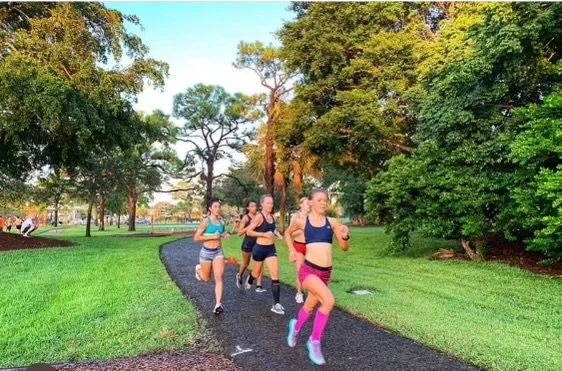







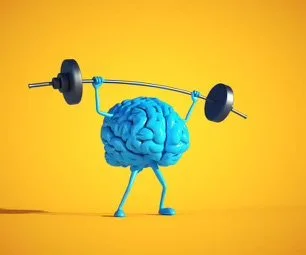
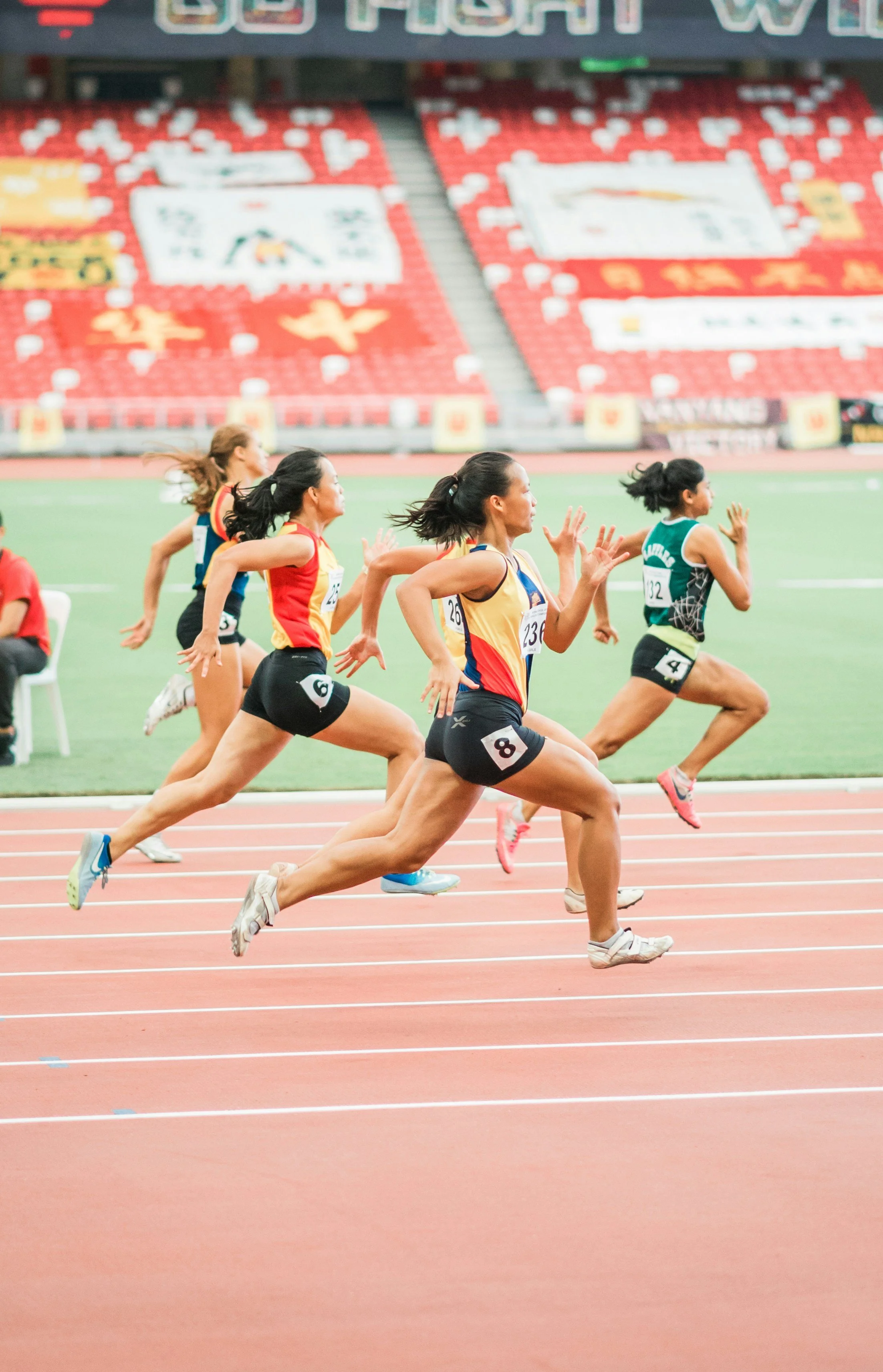














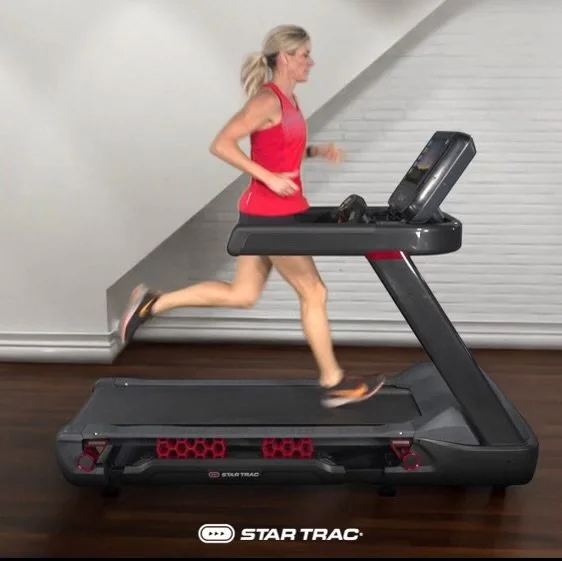









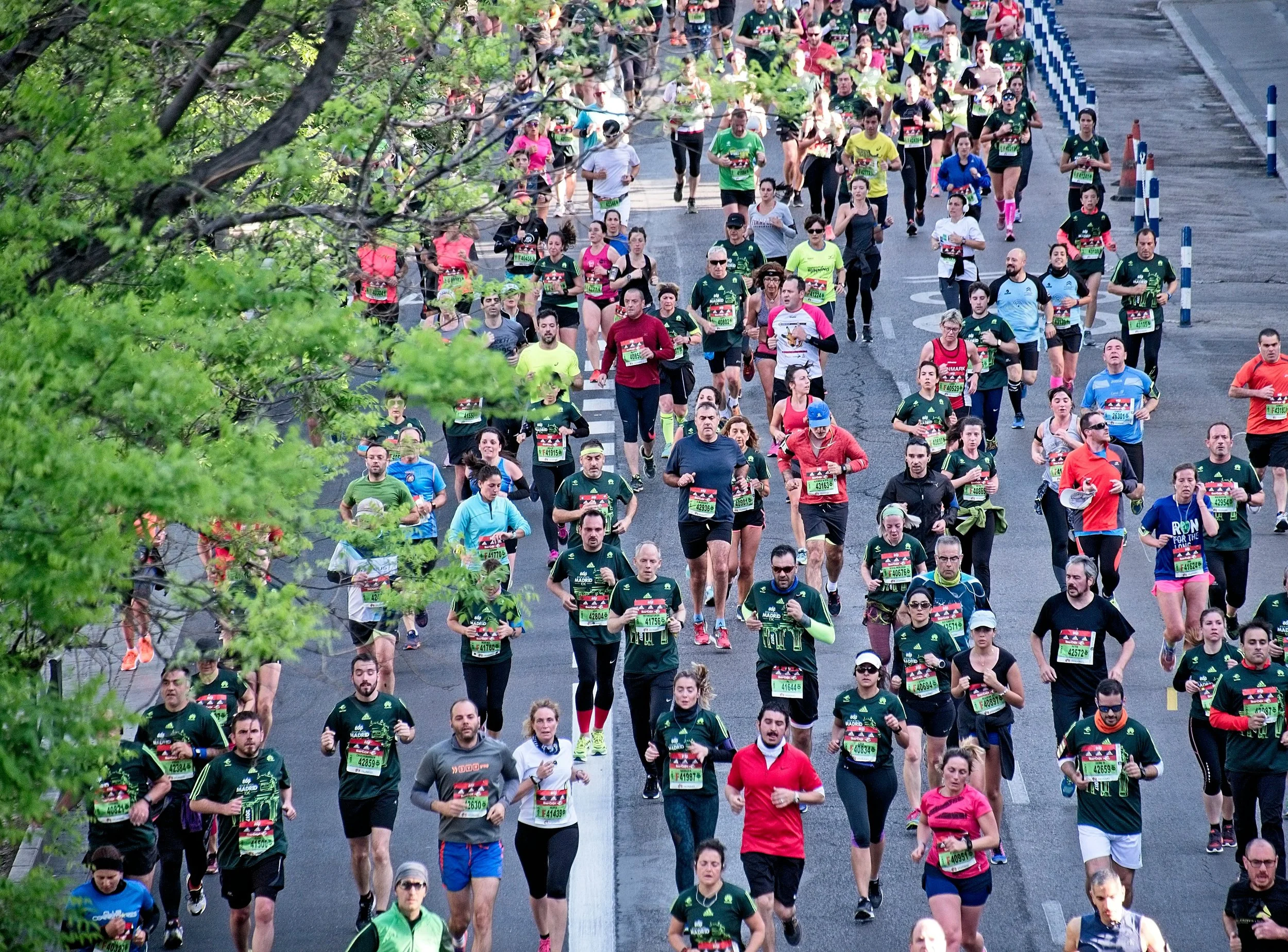



Having a healthy supply of mitochondria could go a long way to improving both strength & endurance.